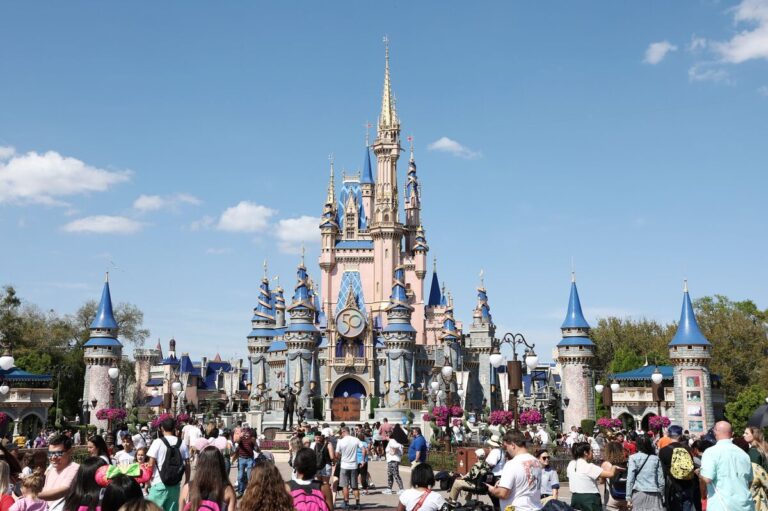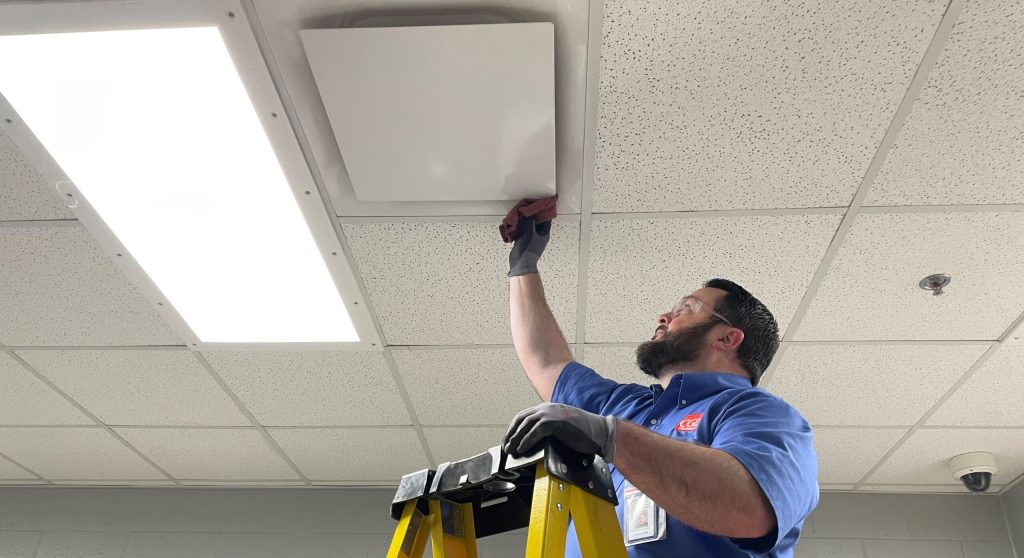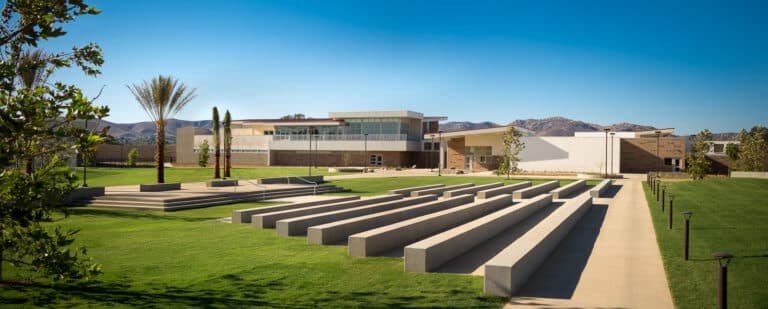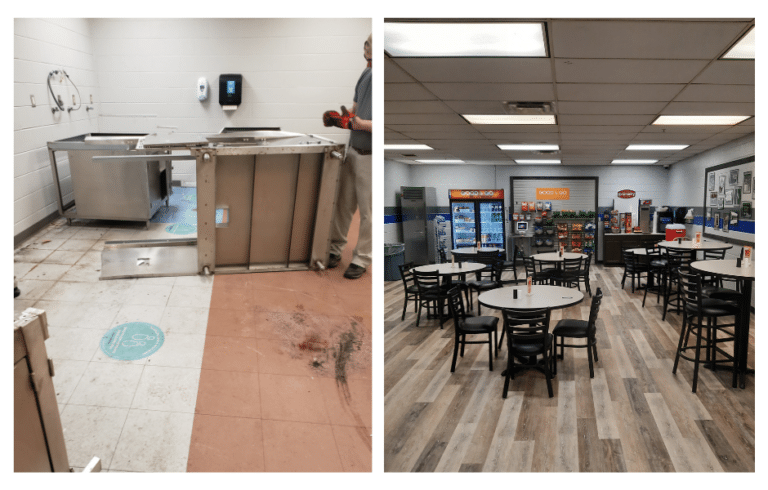
The Happiest Place to Work? How Correctional Facilities Can Learn from Disney’s Employee Experience to Boost Staff Retention
The Current State of Things – What Today’s Staff is Really Looking For
Since the 2020 COVID pandemic, the largest challenge facing correctional administrators is staffing. Not in the sense of making sure the facility is funded for the correct number of staff, but discovering how to attract and retain the right staff. In different industries across the country, the workforce changed. Jails and prisons once represented a stable industry for long-term careers that paid higher than private industry positions. Now, jails and prisons compete with the private sector for the same applicant pool. Private sector positions offer better hours and more pay, as well as offer less confrontational and less stressful environments. Today’s workforce cares less about salary levels when compared to other satisfying elements of the workplace. So the question becomes: how do correctional systems adjust to compete for today’s workforce?
Let’s face it, jails and prisons are not the happiest places on Earth, that’s Disneyland. The jail (or prison) environment is inherently negative, as it is designed to restrict freedoms and punish those who are incarcerated. This negative environment can have a profound impact on the mental health, well-being, and prospects for successful reintegration of residents, as well as the broader social and economic consequences of mass incarcerations. But what is the impact on staffing and the long-term implications of staff retention?
Where You Work and How It Makes You Feel, Matters – Especially to Corrections Staff
The physical environment of a correctional facility has significant impacts on the well-being of staff and visitors. Negative environmental factors, such as poor lighting, inadequate ventilation, and overcrowding, can further exacerbate the negative aspects of the environment, leading to increased stress, tension, and conflict. The environment can be a challenging and stressful workplace for all staff, leading to significant impacts on staff morale. The lack of resources, institutional surroundings, long hours, mandatory overtime, potential for violence and abuse, and the overall punitive nature of the correctional environment can lead to high levels of stress, burnout, and job dissatisfaction among staff members.
Too often, the call for reform within corrections focuses on improving services, living conditions, treatment, and care of the resident population. Far too often, staff consideration is lacking. Improvements are made to the facility to support a more normative living environment, yet staff areas remain unchanged. Services, programs, and out-of-cell time are increased for inmates, yet staffing levels remain the same. Staffing is a vital component of any correctional facility and accounts for more than 50 percent of a facility’s budget. As such, it is essential that staff satisfaction and well-being are considered whenever change is made within the facility.
Looking to a New Source of Inspiration – The Magic Kingdom
 Perhaps, to answer this, we should consider Disney’s business methods for staffing when reimagining our correctional facilities Walt Disney once said, “You can design and create and build the most wonderful place in the world, but it takes people to make the dream a reality.”
Perhaps, to answer this, we should consider Disney’s business methods for staffing when reimagining our correctional facilities Walt Disney once said, “You can design and create and build the most wonderful place in the world, but it takes people to make the dream a reality.”
Disney mastered the sounds, smells, size, and colors to create different expectations to become a place where people want to go. Walt Disney imagined a world where dreams could come true and encouraged his designers and developers to use their imagination to make anything possible. In contrast, correctional environments are loud, smelly, and lack pleasing color schemes. And they are a place no one wants to go, including staff.
Ways to Improve Your Facility Environment to Increase Staff Satisfaction and Retention
As we reform our institutions, we need to remember our staff and create a pleasant work experience. We need to think outside the box to understand what’s important to our existing staff and reduce barriers for the newer workforce. While jails and prisons might not reach the utopian state of a work environment due to its mere mission with the criminal justice system, there are a variety of amenities and some long-standing practices that can be modified and added to improve the environment for all our staff. The following provides a list of suggestions to address these areas:
 Improve lighting: adequate lighting is essential for creating a safe and secure environment. Poor lighting conditions can contribute to feelings of anxiety and depression in not only the residents, but staff as well.By improving lighting, particularly in areas such as cells, common areas, and outdoor spaces, residents may feel more comfortable and safer, while staff have better visibility to perform their required duties and help prevent conflicts and incidents.
Improve lighting: adequate lighting is essential for creating a safe and secure environment. Poor lighting conditions can contribute to feelings of anxiety and depression in not only the residents, but staff as well.By improving lighting, particularly in areas such as cells, common areas, and outdoor spaces, residents may feel more comfortable and safer, while staff have better visibility to perform their required duties and help prevent conflicts and incidents.- Increased natural lighting: Natural light has been shown to have a positive impact on mental health and well-being. By increasing access to natural light in correctional facilities, such as through skylights or windows, staff and residents will feel more connected to the outside world.
 Improve ventilation: Poor ventilation can contribute to the spread of disease and illness, as well as increased feelings of discomfort and stress. By improving ventilation in jails, such as through the installation of air conditioning or better air filtration systems and regular cleaning of air duct systems, staff will feel more comfortable and healthier.
Improve ventilation: Poor ventilation can contribute to the spread of disease and illness, as well as increased feelings of discomfort and stress. By improving ventilation in jails, such as through the installation of air conditioning or better air filtration systems and regular cleaning of air duct systems, staff will feel more comfortable and healthier.
- Redesign living spaces and cells: It should go without saying, poorly designed facilities create problems for staff. Poor sight lines into living areas and cells create barriers for staff to perform to supervise populations. Blind spots within living spaces create areas where residents can hide, gamble, or use assaultive behavior. These poor behaviors permeate throughout the living unit, creating a more challenging environment for staff to control. Overcrowded facilities and tight living quarters increase tension amongst the population. Creating more living space for the residents lowers tensions, which directly impacts the confrontations and challenges faced by staff.
 Facility colors: There is nothing like fresh paint to brighten a room. Colors are used within our everyday to evoke emotion and illicit interest. Marketing and branding use colors to attract new customers and persuade customers to make a purchase. Changing facility colors create change in environmental conditions. Eliminate the institutional feel created by the metallic grays and neutral tones and liven up living units, hallways, and especially staff break areas. Introduce art and color through murals, paint, carpeting, and tile.
Facility colors: There is nothing like fresh paint to brighten a room. Colors are used within our everyday to evoke emotion and illicit interest. Marketing and branding use colors to attract new customers and persuade customers to make a purchase. Changing facility colors create change in environmental conditions. Eliminate the institutional feel created by the metallic grays and neutral tones and liven up living units, hallways, and especially staff break areas. Introduce art and color through murals, paint, carpeting, and tile. Improving recreation areas: Recreation areas provide a respite from the stress and tension of life in a correctional facility. The more residents relieve stress and tension through exercise and fresh air, the less disruptive they tend to be toward staff and more compliant they tend to be with staff direction. Having recreation areas with green space, (trees, fresh air, grass, etc.), will help residents feel more connected to the outside world they feel, promoting better mental health. For staff alike, green spaces reduce stress and tension caused by the institutional environment. Create green spaces in staff break areas, where staff can escape the institution and break away for a relaxing meal, fresh air, and to check their latest social media updates.
Improving recreation areas: Recreation areas provide a respite from the stress and tension of life in a correctional facility. The more residents relieve stress and tension through exercise and fresh air, the less disruptive they tend to be toward staff and more compliant they tend to be with staff direction. Having recreation areas with green space, (trees, fresh air, grass, etc.), will help residents feel more connected to the outside world they feel, promoting better mental health. For staff alike, green spaces reduce stress and tension caused by the institutional environment. Create green spaces in staff break areas, where staff can escape the institution and break away for a relaxing meal, fresh air, and to check their latest social media updates.
- Break space: Staff need a break from the institution. Create relaxation space for staff. A place where staff can detach themselves from the stress environment and can listen to music, exercise, eat a meal, and connect withthe outside world. Our newest employee workforce lives on social media. The need to “check-on” or “post” something for their social media family is important. Most facilities prohibit cellphones and restrict internet usage. Create space within the staff break area where phones are possible or connections to the internet permit these brief social connections. Install lockers in staff locker rooms with charging capabilities for equipment and phones and allow time for these brief connection periods to support the new social networking norms.

Renovated staff breakroom at the Franklin County Detention Center provides much needed relief and relaxation for the hardworking staff on a daily basis. A mini mart with food and snacks, as well as plenty of place to relax, was added for staff.
Renovated staff breakroom at the Franklin County Detention Center provides much needed relief and relaxation for the hardworking staff on a daily basis. A mini mart with food and snacks, as well as plenty of place to relax, was added for staff.
- Mini marts are a newer trend in creating amenities for staff. Creating convenient shopping spaces where staff can buy milk, bread, eggs, and other minor needs helps shorten the employee’s day and gives the employee a sense of belonging and importance to the facility.

Renovated staff breakroom at the Franklin County Detention Center provides much needed relief and relaxation for the hardworking staff on a daily basis. A mini mart with food and snacks, as well as plenty of place to relax, was added for staff.
- Lastly, we cannot forget the training needs. In times of staffing challenges, training sessions get curbed and more efficient means of delivering training are introduced. Too often, we hear from staff that trainings are dull and described as “death by PowerPoint”. Training is one of the most important services we give our staff. Use training to share the vision and mission of the institution. Engage staff to be part of the change, and deliver meaningful training to all employees.
Final Thoughts
Disney creates a culture with a sense of belonging, devotion, and employees who want to exceed customer expectations. While correctional facilities are not expected to be the happiest places on Earth, regardless of how satisfied staff are, the environment can be improved to create a space where employees are empowered, trained, and treated as professionals. Staff are our largest commodity and require significant investment to create the successes for which we all strive, and we should always be searching for new ways to invest and improve upon their experience.
About the Author:
Bill Lawhorn
William Lawhorn brings more than 30 years of experience working in county jails and state correctional systems, specializing in system studies, facility administration, and operational planning and implementation. He began his career with the Broward County Sheriff’s Office in South Florida, where he would later serve as the Assistant Director. He went on to server as the Director of Facility Operations managing the Vermont DOC and Acting Director of the St. Lucie County Jail in South Florida. He served as a Commissioner for the Florida Corrections Accreditation Commission, is a graduate of the FBI national Academy, the Southern Police Institute (SPI) and a technical assistance provider for the National Sheriffs’ Association.
Connect with Bill on LinkedIn

